Pai, Northern Thailand: 22 Sights You Must Uncover (2025)
Pai, a charming and laid-back town situated in the picturesque Mae Hong Son province of Northern Thailand, offers visitors an idyllic retreat where nature, culture, and adventure seamlessly intertwine. Surrounded by lush mountains and verdant rice fields, Pai invites explorers to unwind by its tranquil river, discover majestic waterfalls, and venture through stunning canyons. A melting pot of diverse cultures, Pai boasts a vibrant arts scene, enticing street food, and a warm, welcoming atmosphere. From indulging in therapeutic hot springs to exploring the iconic Pai Memorial Bridge and visiting the enchanting Chinese Village, Pai provides a captivating experience for travelers seeking a truly unique and unforgettable Thai adventure.
The road to Pai is famous for its 762 curves, a challenge that demands attention and steady riding skills. Along the way, you’ll find hot springs, waterfalls, and viewpoints, making the journey as rewarding as the destination. Because the road is narrow and often crowded with vans, riders must pace themselves carefully. For safe and comfortable travel, experienced riders usually select a suitable bike through our motorcycle rental service before heading north.
Located in the magnificent mountains of northern Thailand, just 135 kilometers from Chiang Mai, the small provincial town of Pai (Thai: ปาย, bpaai) in Mae Hong Son province, nestled among the most beautiful natural scenery you can imagine, is gradually becoming a popular tourist destination. The leisurely unhurried life, authentic cafes, and chillaxed lifestyle attract hippies, artists, backpackers, and everyone in their midst. So let’s take a look at the local tourist sights!
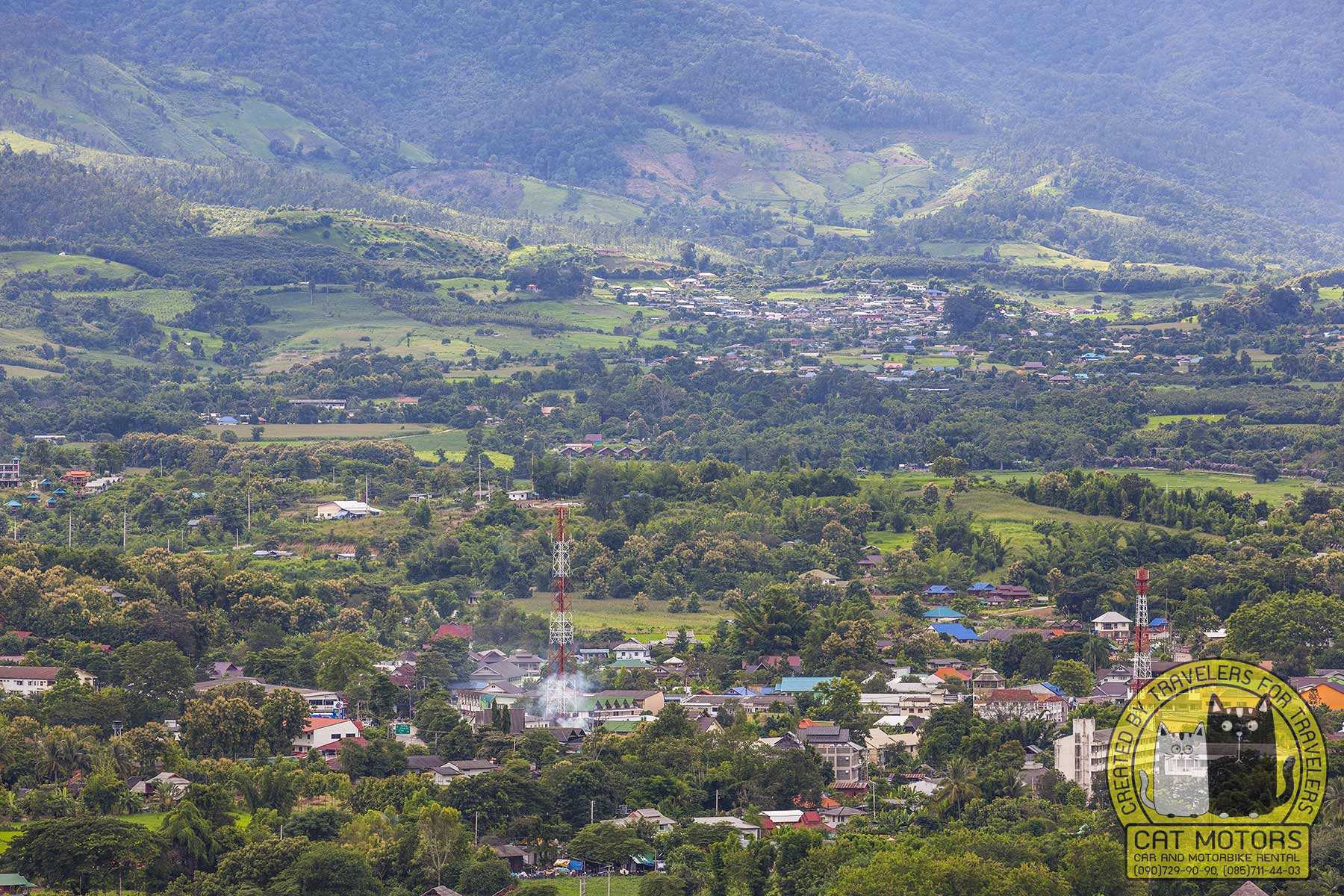
Heading To Pai
Our guide lists the best times to visit, beautiful places to see, and the best places to stay. This information has been gathered from numerous online reviews, personal experiences, and advice from local experts.
Get away from the stresses and problems of everyday life and enjoy the beauty of the area with all the experiences and pleasures this lovely town has to offer! Some travelers even say that once you’ve been to Pai, you won’t be able to leave! And it’s true – you will fall in love with this town!
Chiang Mai Erotic Garden
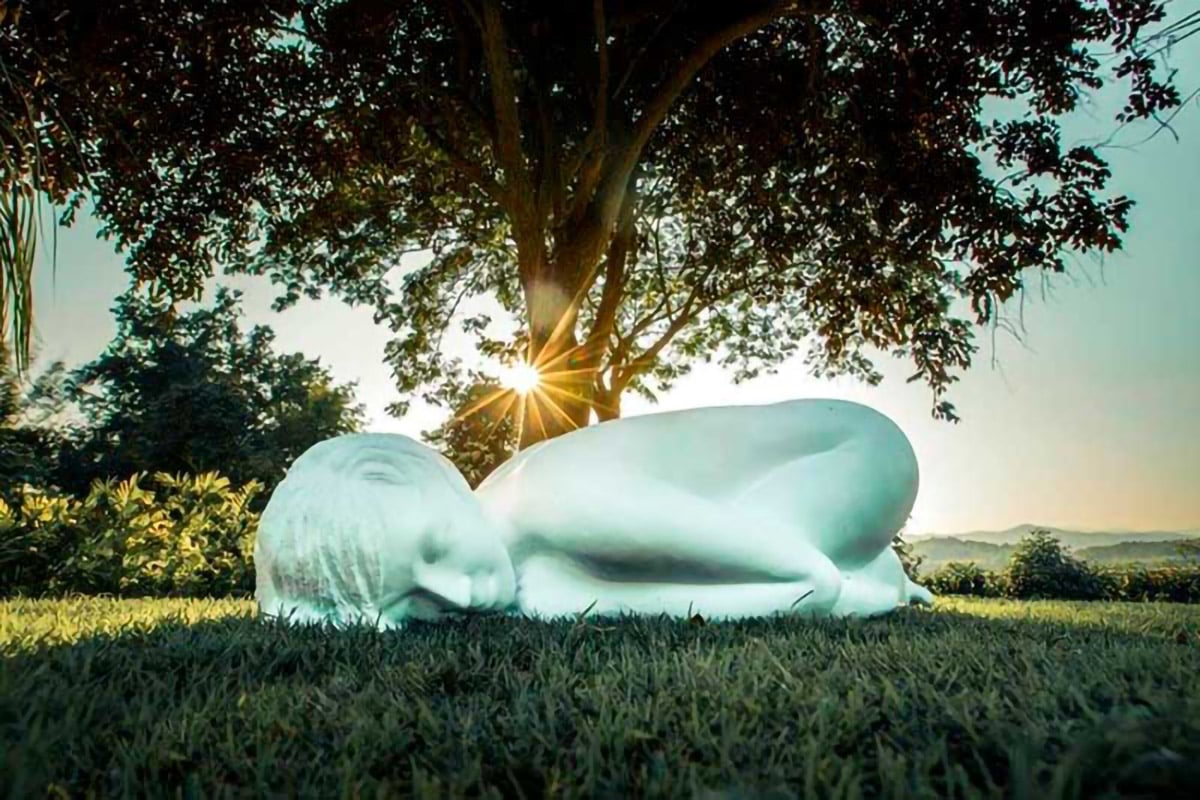
Chiang Mai Erotic Garden (Google Map) is a popular tourist attraction in Chiang Mai and the only erotic garden you will find in Thailand! It is a beautiful, charming place filled with plants and sculptures, inspired by Katai Kamminga’s love of art and beautiful nature.
The hostess will show you around her garden and be your guide for about 45 minutes, speaking passionately in detail about the sculptures, exhibits and unique plants. This lovely and friendly woman’s view of the concept of contemporary art combined with the landscaping within this theme park is truly fascinating and unusual. You will also receive a complimentary drink at the tea house!
Mok Fa Waterfall
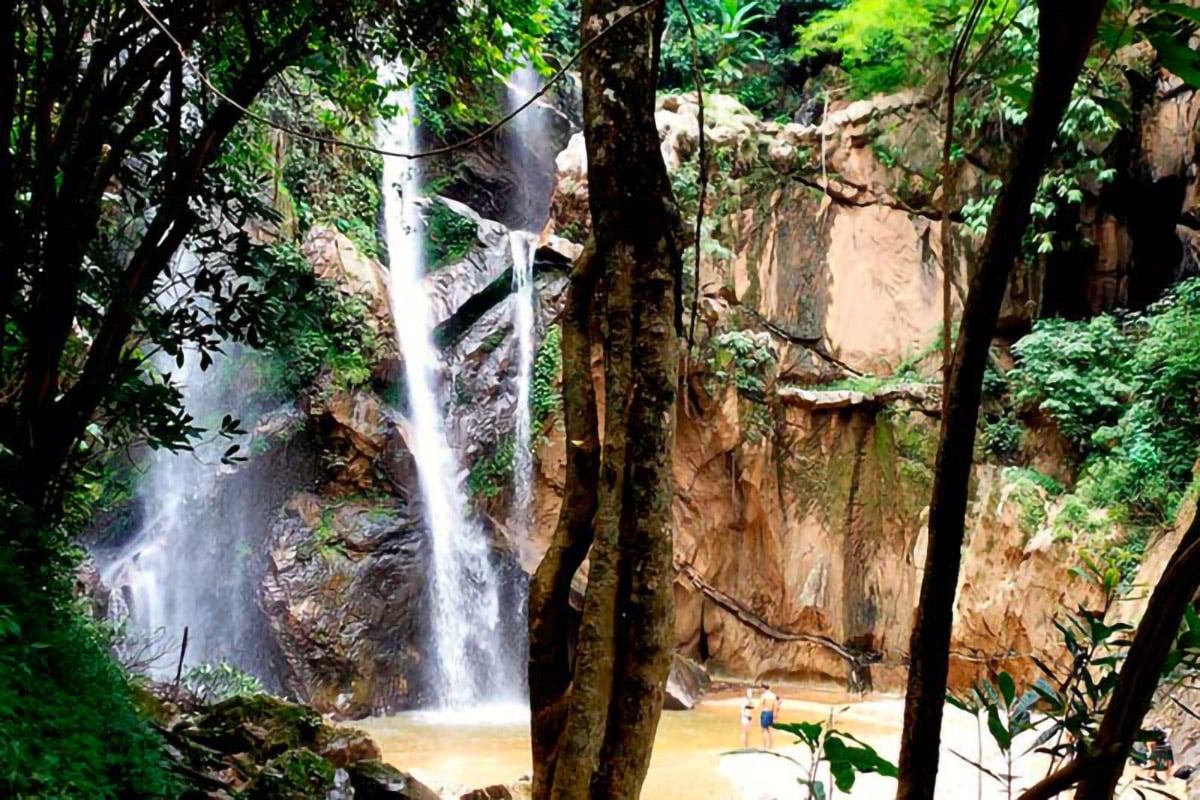
If you are traveling between Chiang Mai and Pai, you can’t miss visiting the mesmerizing Mok Fa Falls. It is part of the famous Doi Suthep Pui National Park and is a beautiful single-level cascading waterfall over 60 meters high. The crystal clear water is perfect for refreshing swimming on a hot summer day. A campsite is available for travelers who want to spend the night in the national park, but reservations must be made in advance.
Things To Do in Pai
Tha Pai Memorial Bridge
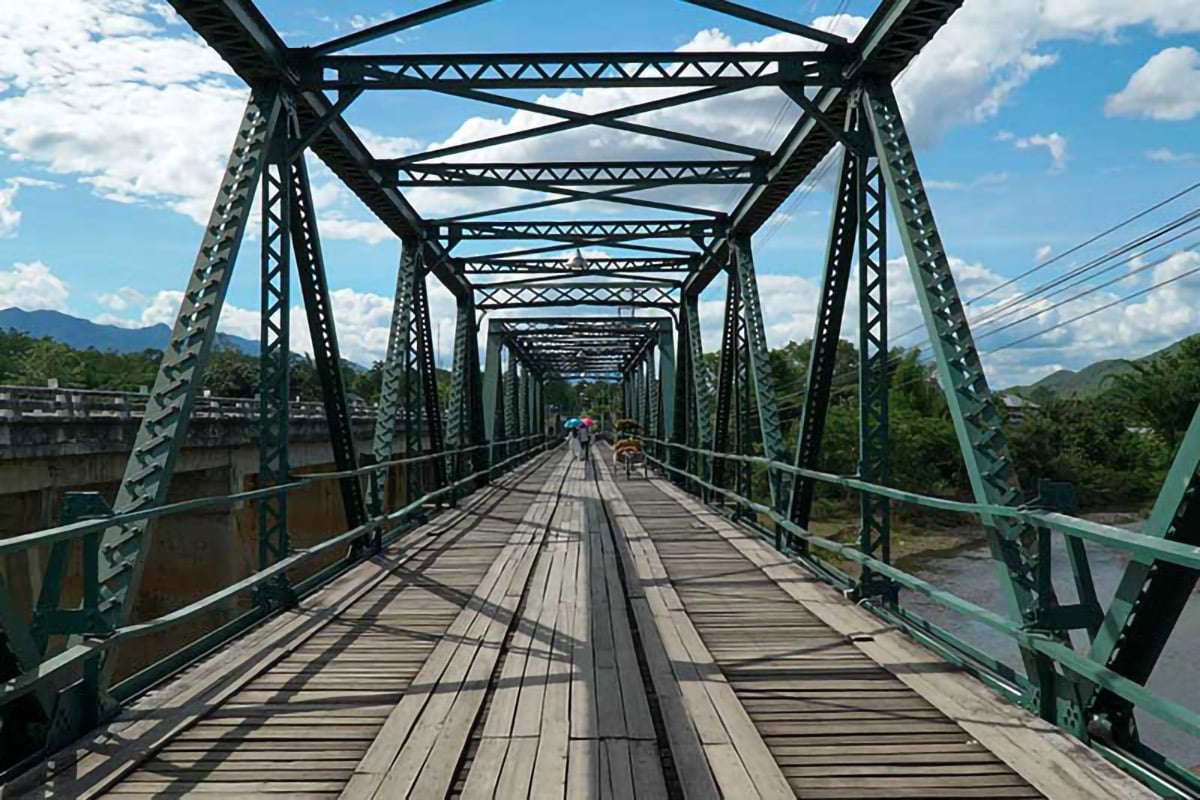
The Pai Memorial Bridge is a popular tourist spot in the town – especially among tourists who like to post selfies on social media. According to legend, the Japanese army built this engineering structure in 1941, during World War II, to move troops, food, and weapons to invade and capture Burma.
However, this is only a legend, as the original bridge was built of wood and burned down in 1946. The locals then built a second wooden bridge, which was destroyed by a great flood in 1973. Only after that was the iron bridge built, on which nowadays travelers like to walk so much taking pictures for Instagram.
Pai Canyon Kong Lan
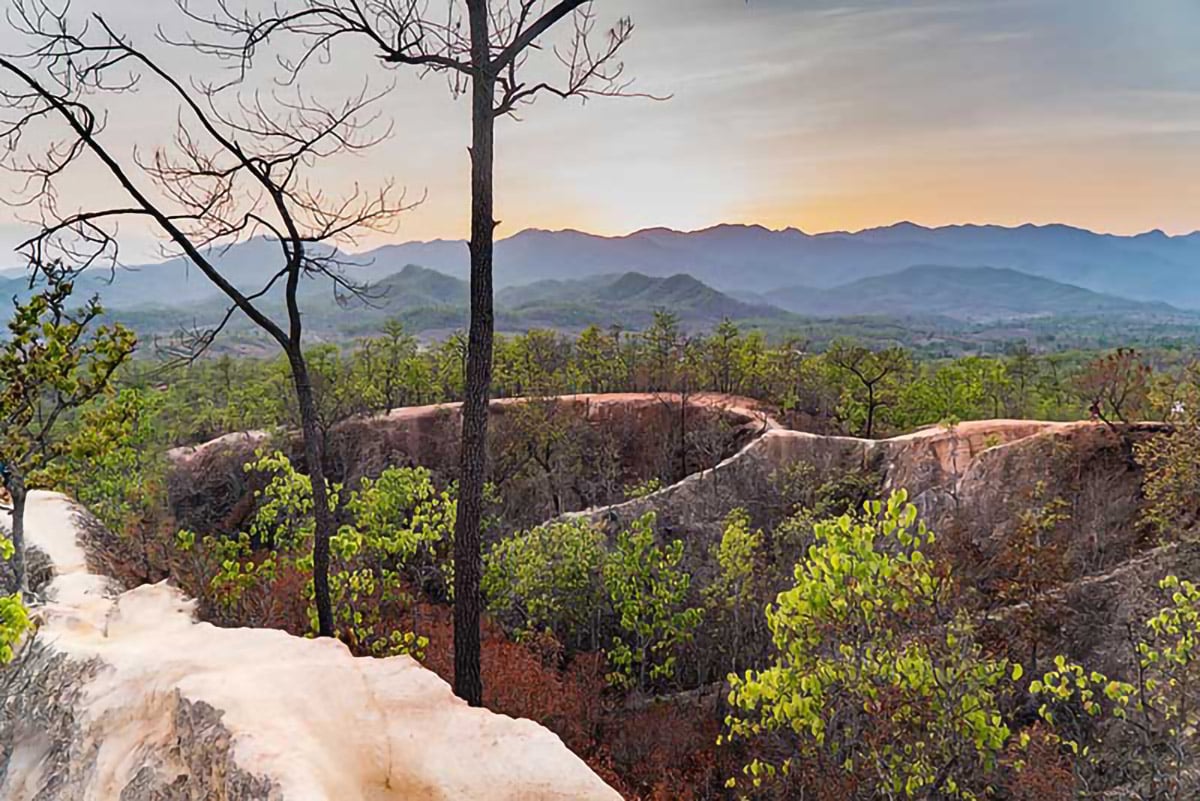
Pai Canyon is located on highway 1095, south of Pai. This natural tourist attraction is also known as Kong Lan (it means tree monitor trail in the local dialect). It was formed due to centuries of soil erosion due to strong winds and rain, which caused ground collapses. Today, in some parts of the canyon, the height of the cliffs can reach 30-40 meters.
Although the place is trendy for walking and watching the beautiful sunset, there are no fences or railings. Therefore, tourists must be careful. It is not recommended to visit this site for older people and families with children because there are always accidents with careless travelers. The entrance fee is free.
Be sure to wear sturdy shoes to visit top of canyon, and under no circumstances visit this place during rain, as there is a high risk of slipping on wet clay and falling off the cliff
Coffee in Love
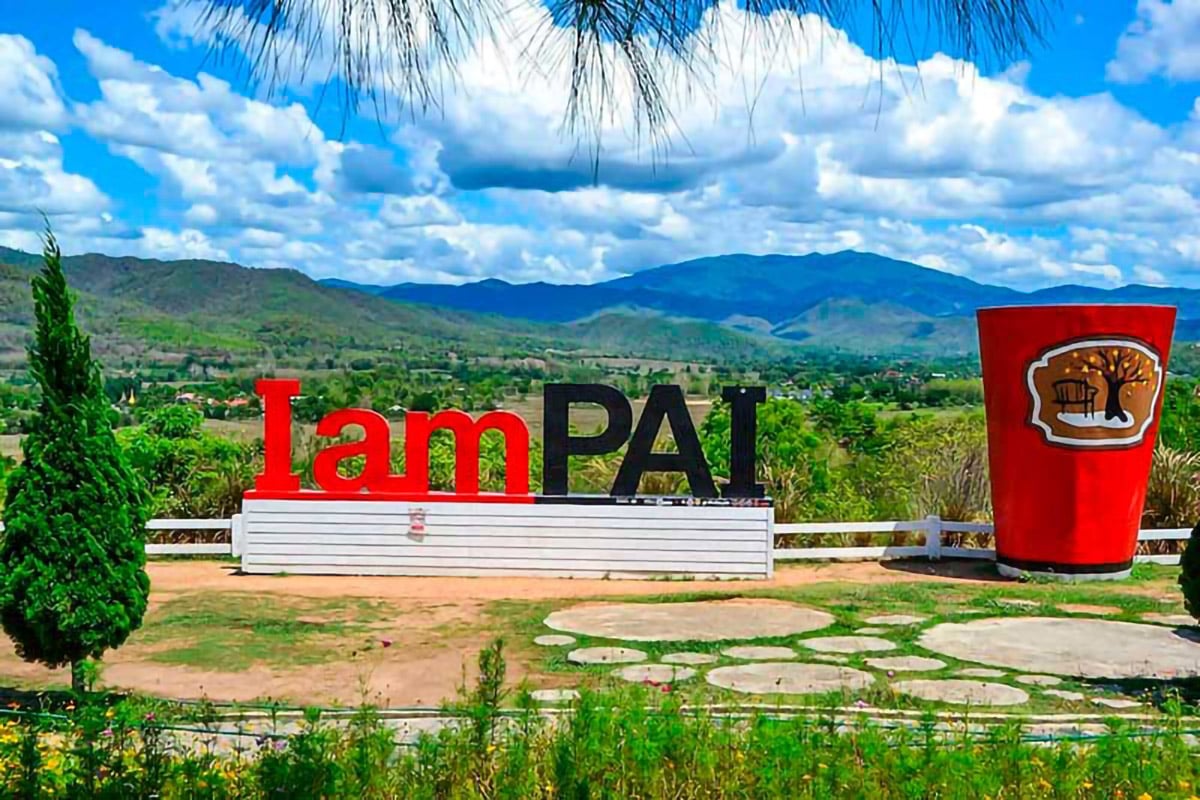
Coffee in Love is a beautiful roadside coffee shop in Pai that offers tasty coffee and mesmerizing views. The coffee shop is considered a popular tourist destination because of its famous film settings in the hit Thai movie Pai in Love released in 2009, and the Chinese film Lost in Thailand released in 2012. Many tourists visit the café to re-enact scenes from these movies, which have gained immense popularity over the years. The picturesque Coffee in Love cafe, with its surrounding countryside and great views of mist-shrouded hills, is sure to thrill you.
Kho Ku So Bamboo Bridge
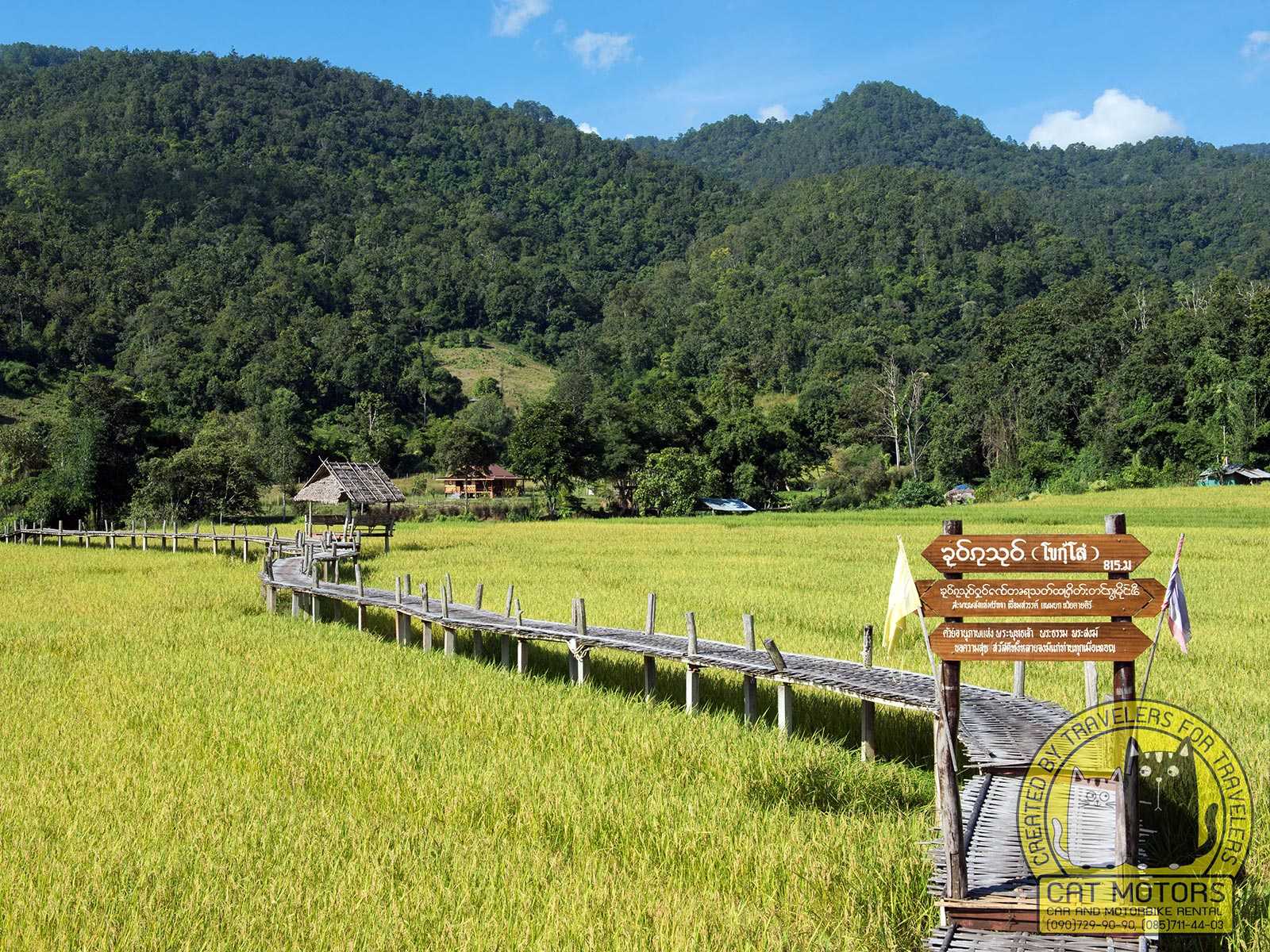
The Bamboo Bridge is located about 11 kilometers from Pai, near the Pam Bok waterfall, and stretches 815 meters among the rice fields.
In English, the name means Bridge of Merit. It was built especially for the monks who walk every morning across the paddy fields to the nearby villages to collect donations. Nevertheless, it is open and accessible to travelers.
The bamboo construction is straightforward and uncomplicated – pedestrian bridges were built this way hundreds of years ago, and nothing has changed since then. The best time to visit this place is at the end of the rainy season when the surrounding area is flooded with the bright green colors of the rice fields. However, if you arrive early in the morning, you can catch the monks walking across the bridge in the rice fields in the mist and take impressive photos.
Wat Nam Hu
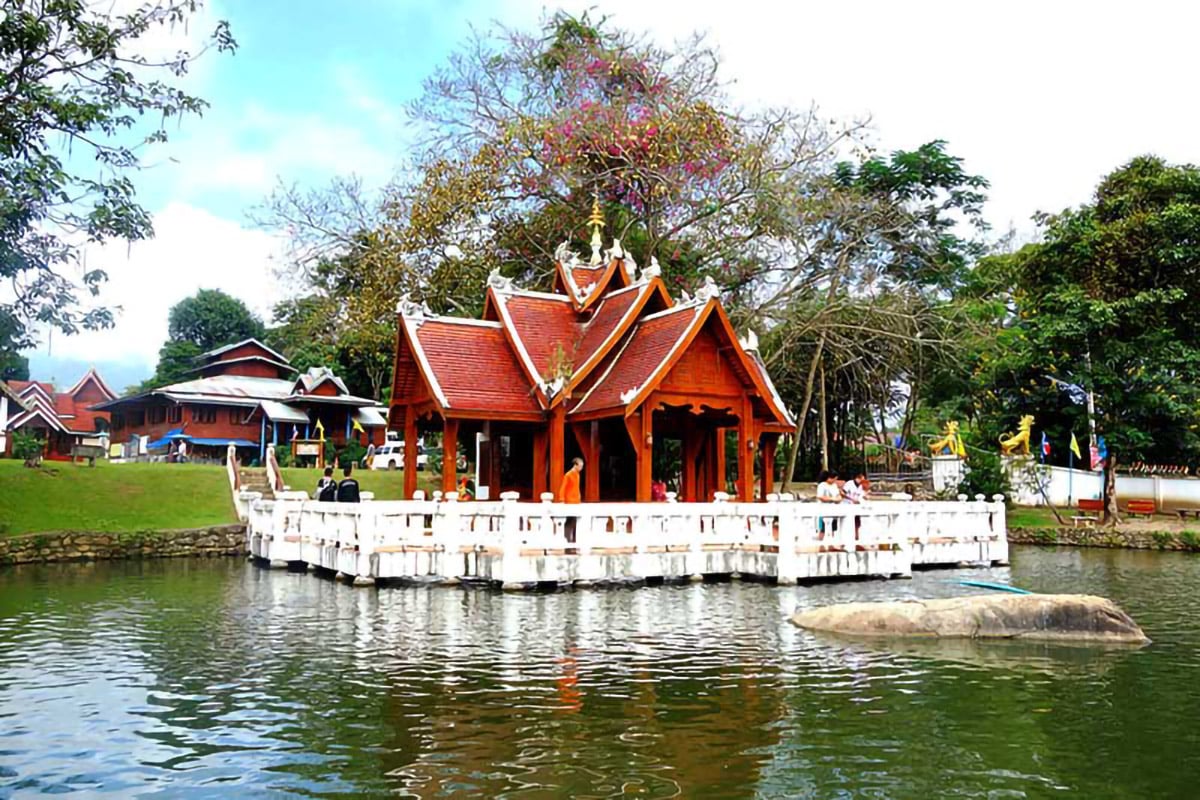
Despite its humble appearance, Wat Nam Hu, housing a statue of the sacred Buddha created in the Chiang Saen artistic style, is one of the most revered temples in Mae Hong Son Province. The head of the Buddha is hollow, and water constantly oozes out of it. Locals believe that it is holy water that cures many diseases.
Behind the temple is the memorial pavilion of Her Royal Highness Phra Suphankanlaya, eldest sister of King Naresuan the Great, on whose orders this temple was built in her honor some 400 years ago. Her ashes and relics are housed here.
Although there is not much historical information about her life, there are several Thai myths and legends about her. Many Thais hold her in high esteem as a national heroine and even a folk goddess.
Santichon Village
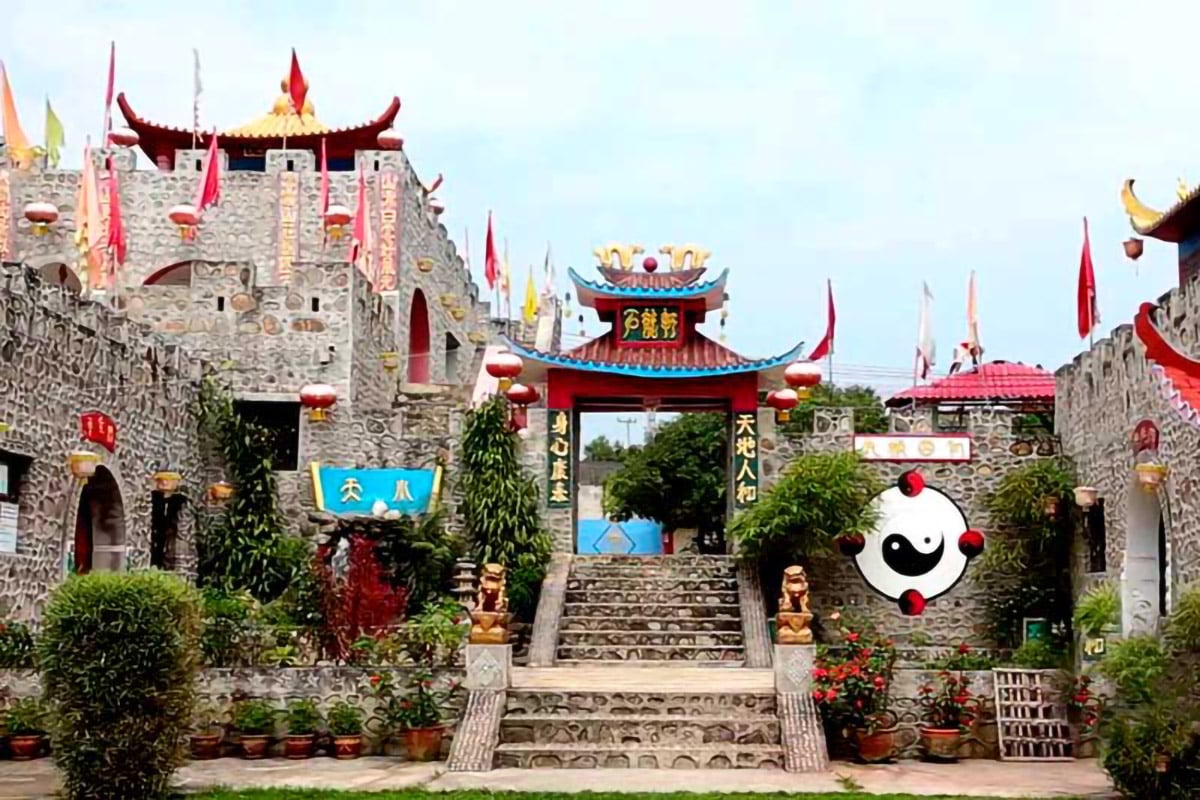
Santichon is a Chinese village with a theme park whose prominent landmark is a stone house in the traditional Yunnan style, located 5 km northwest of Pai. The settlement where the Chinese community lives are situated behind the theme park. The Chinese living here are descendants of part of the Lost Army of the 93rd Kuomintang Division, which retreated south after the end of the Chinese Civil War in 1949. Some have settled here in Santichon, others in Doi Mae Salong, and in the foothills of Doi Tung.
In addition to the tourist activities you’ll find here, there’s a small museum that tells the story of how the locals ended up in Thailand as a kind of asylum seekers/refugees but did not get enough resources and help.
Tea lovers can buy oolong tea or locally grown coffee. In addition, small tea stores offer cute souvenirs and trinkets. You can also rent traditional Chinese finery for a photo shoot in front of the themed buildings, shoot an arrow, ride a pony and feed the fish in the pond.
After you’ve been here, walked around the park, and eaten delicious Yunnan food at local Chinese restaurants, it’s time to head to the hilltop viewpoint, which we’ll tell you about in the next chapter.
Yun Lai viewpoint
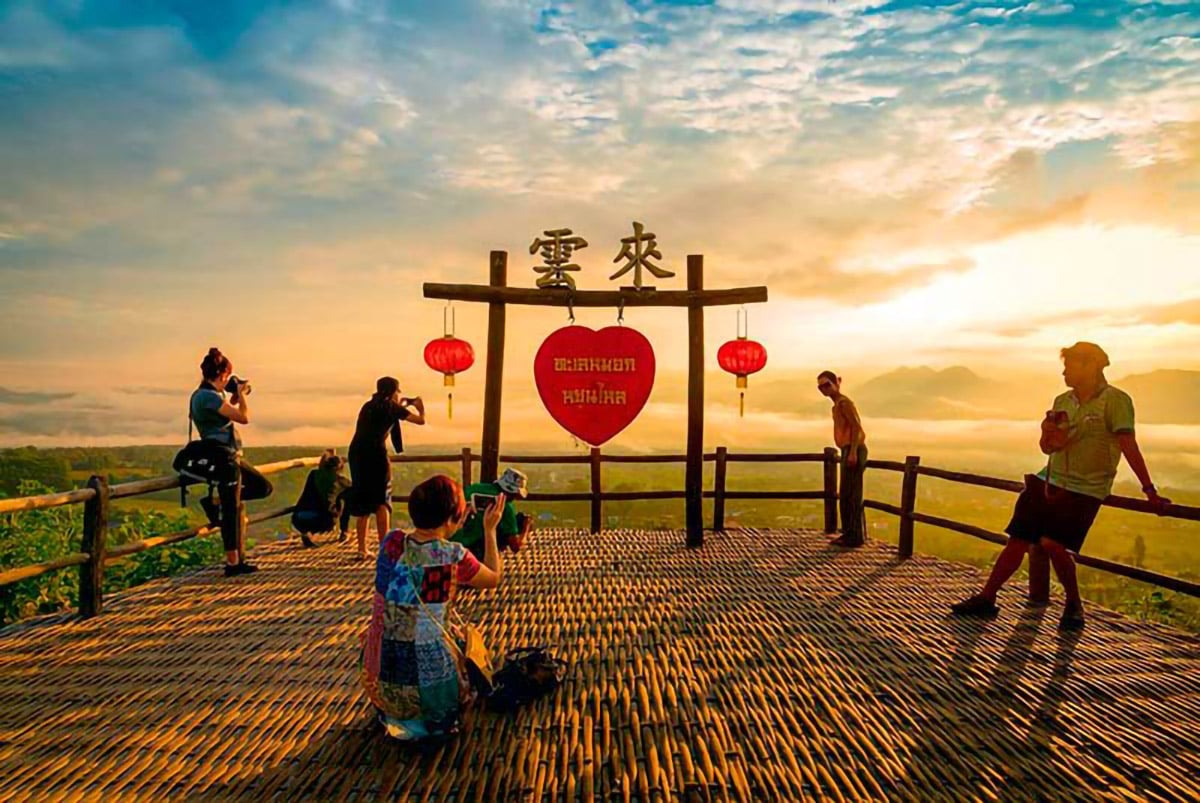
Heading up the road from the village of Santichon, you will reach the Yun Lai Viewpoint on the top of the hill, which offers a fabulous panoramic view of the mountains and surroundings. The most delightful picture can be seen in the morning, during sunrise. But at this time it can be crowded, as sometimes this view point gathers more than 100 people at a time to watch the dawn.
If you are sentimental, you can buy a souvenir in the form of a heart and hang it on the love tree, pre-written with your name and your wishes. This place is especially popular with young couples who come here to propose marriage. In the tea shop, which is located right there, you can drink tea or coffee and buy local pastries for a nominal amount.
It is recommended for a stunning 360-degree view, both in the morning during sunrise and in the evening during sunset.
However, when the locals burn straw after the rice harvest in March and April, the entire valley is covered in acrid smoke, so this is not the best time to visit.
Sai Ngam Hot Spring
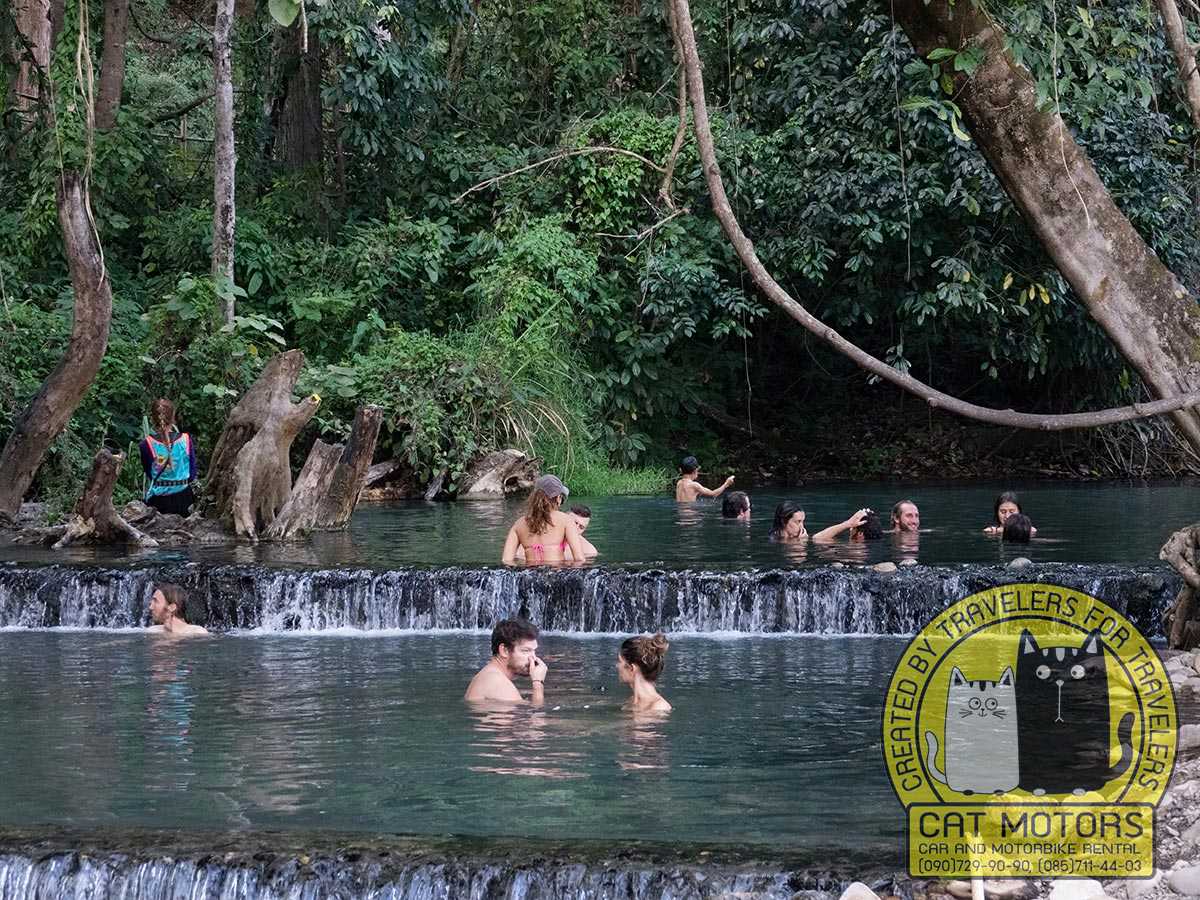
Once upon a time, about 15-20 years ago, Sai Ngam hot springs were called secret hot springs because few people knew about it, the entrance was free, and there were rarely people here.
Today, this site is well known, so you can often meet 20-30 people swimming in the water. But even when it is crowded, it is still an excellent place to relax with crystal clear, hot water that fills the pool from natural hot springs. The main swimming pool is in a shady area, so there is no need to bring sunscreen, as it is when you visit places for swimming in the open sun. Travelers with delicate and sun-sensitive skin will appreciate it.
Even though entry to the hot springs has long been a fee of 200 baht per person +20thb for motorbike, the hot springs is still worth every penny.
You will find a changing room and lockers to store your belongings at the entrance. Sometimes a local shop is open where you can buy bathing suits, towels, and food. But, just in case, bring your own towels from your hotel or guesthouse. If you have rubber slippers or shoes for walking in the sea, grab them also, because the bottom of the pool in some places is very rough, and such shoes will come in handy. But its absence will not be a big problem.
If you have a device for underwater photography – be sure to bring it with you! The water is so clear that we’re sure you’ll want to take some of your underwater photos here!
Please note that in the hot springs Sai Ngam forbidden to drink alcohol and smoke.
Pai Hot Springs Resort & Spa
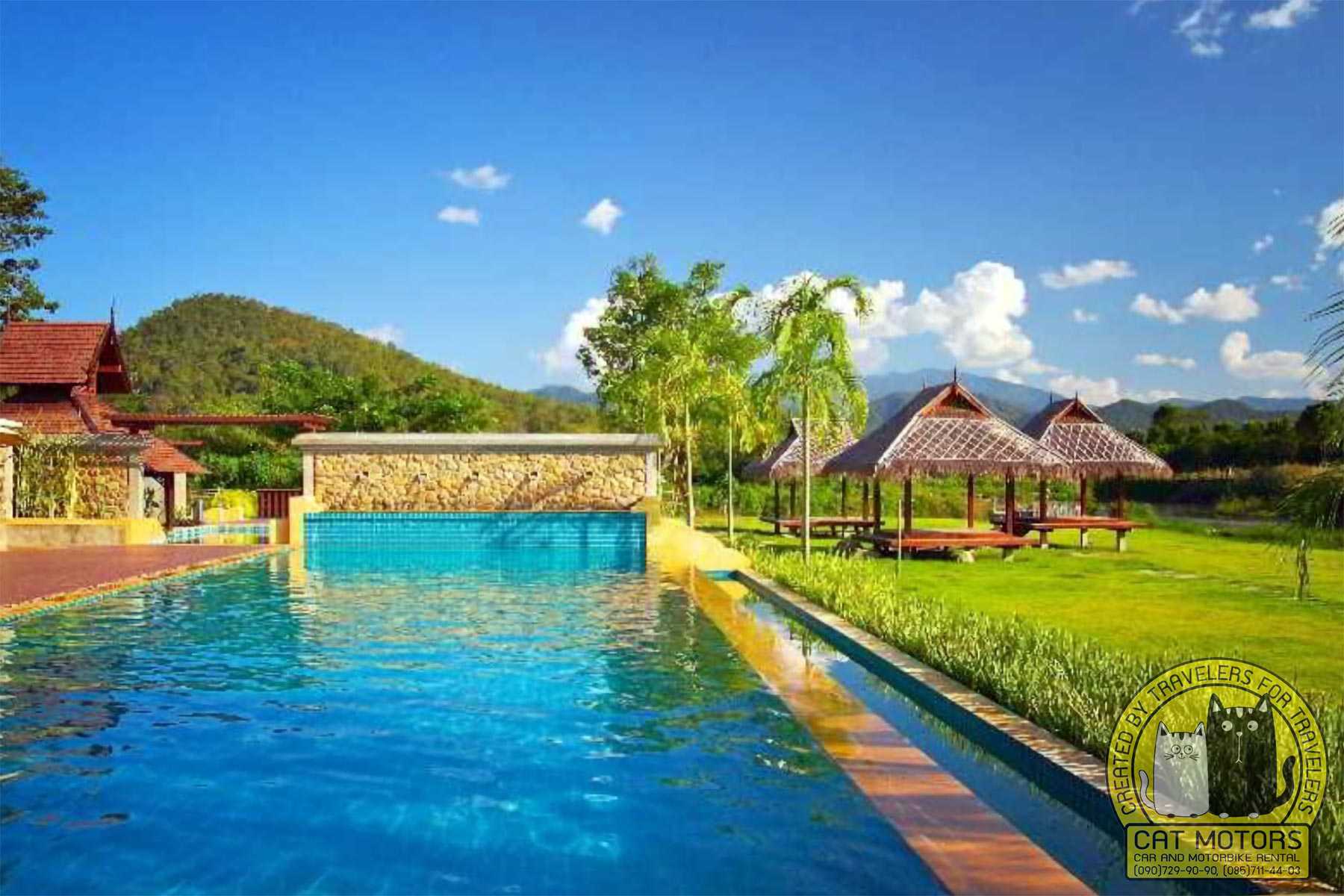
The resort is located on the banks of the Pai river, amid green forests and mountains, offering guests bungalows and cottages that are perfect for a weekend getaway. The chaos and the hustle and bustle don’t reach this site, so travelers come here to relax and enjoy the fresh mountain air, as it is an incredible vacation spot for people looking for tranquility.
If you are not staying here overnight, you can visit the resort by paying either 200 baht for a single visit or buy a pass for 10 visits for 500 baht. Once here, you can stroll along the shady paths, relax in the gazebo, eat inexpensive and delicious local food, and of course, spend the day swimming in the pool and soaking in a basin of hot spring water.
If you come to Pai for a few days, it may be an excellent alternative to the hot springs we wrote about above. The resort staff is amiable, and the surroundings are peaceful and lovely. By the way, accommodation at the resort is also inexpensive.
Also, sometimes you can see elephants coming here for a swim in the river! You will definitely like it here if you try to avoid crowded places.
Chedi Wat Phra That Mae Yen
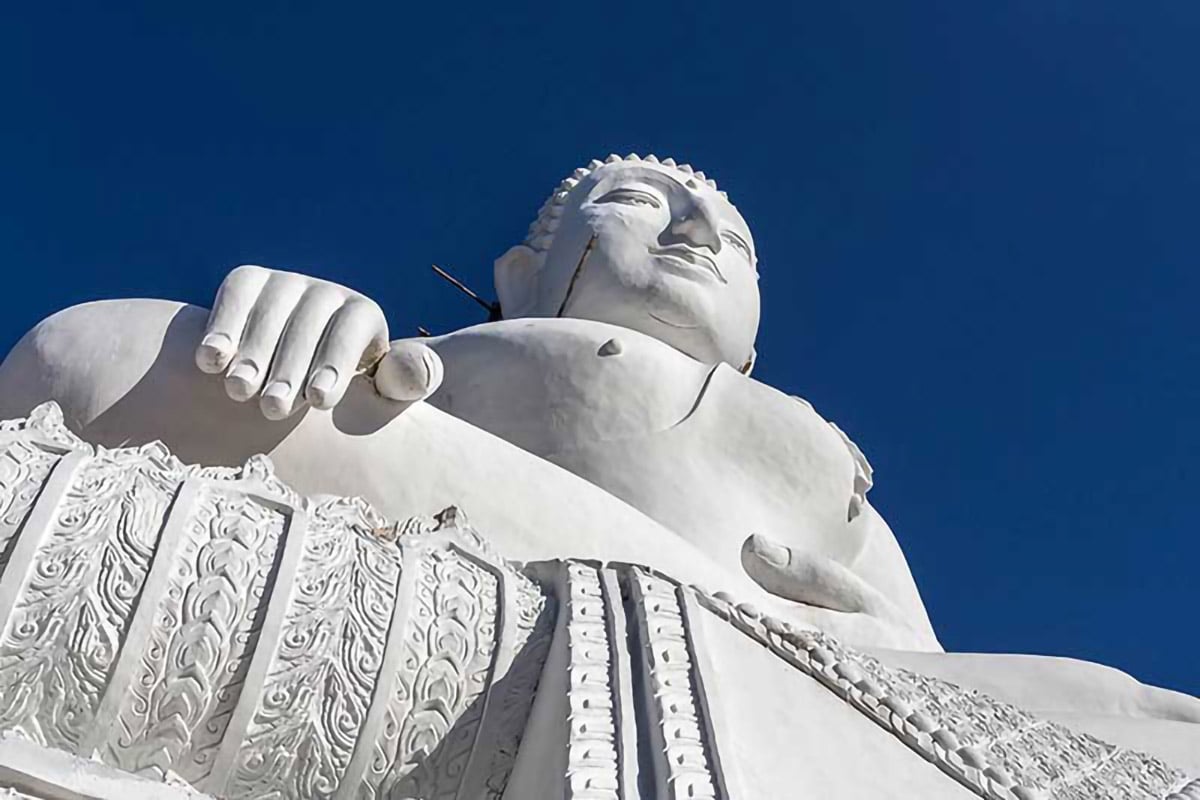
Wat Phra That Mae Yen is a five minutes from the city. But you can come here by scooter or by car or by ordering a cab at the hotel reception. Once you arrive, you have to climb 353 steps to get to the top. At the top you will be greeted by a magnificent statue of the White Buddha, which can be seen from almost anywhere in town, and all around is a spacious platform, a beautiful place with breathtaking views of the surrounding area. Evening is the best time to visit this wonderful attraction. But, it can be a bit crowded at this time, as many travelers come here to watch the sunset sitting on the steps.
So, if you are trying to avoid the crowds, it is better to visit this place in the morning. Although, perhaps if you read these lines and come here in the morning, you will find yourself among those who are also trying to avoid the crowds and who also read these lines =) By the way, it is up to you to decide the time of your visit!
We advise all travelers to remember that when visiting religious sites in Thailand it is customary to wear modest clothing covering the body, shoulders, and knees. If you do not have such clothes, you can borrow them for 20 baht here. Also, don’t forget to bring sunscreen, walking shoes and drinking water!
Pai Walking Street
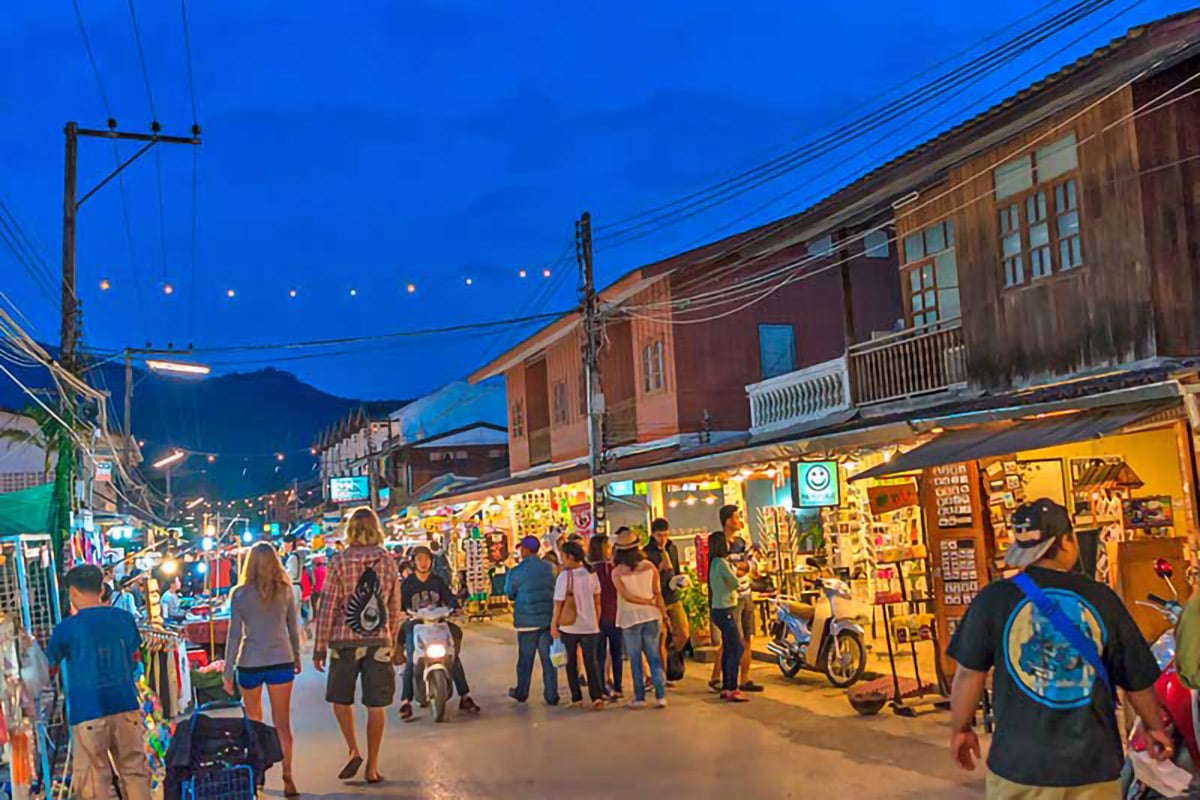
Pai Walking Street is located on the main street of Rungsiyanon Road, a colorful shopper’s paradise where you can find a wide range of unique crafts, postcards, jewelry, souvenirs, handmade clothing, and stunning authentic street food, pastries, and desserts. In addition, you can get great keto or vegetarian meals, Thai, Italian, Indian, Japanese and Mexican food, and more! Walking Street is also surrounded by cafes and bars; almost all have fantastic live music in the evenings. This famous craft and food night market comes alive every evening, running from 6:00 p.m. to 10:30 p.m.
Travel To Outskirt
Doi Kiew Lom viewpoint
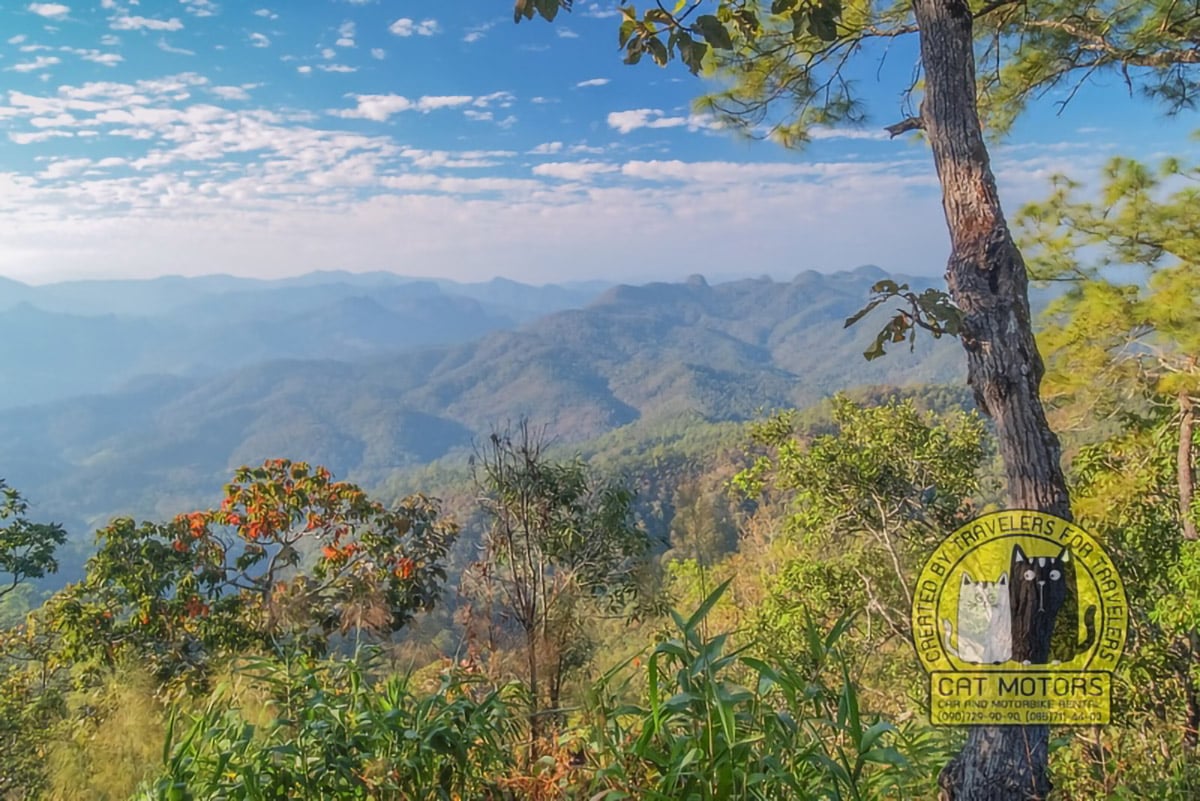
Doi Kiew Lom Viewpoint is a popular vantage point that offers stunning views of the mountains surrounding Pai. The road to the observation deck is quite good. If you choose to visit the lookout at sunrise, the mist and sunlight will make you feel like you’ve been taken into a beautiful fairy-tale atmosphere.
When you visit this place, you will likely find it windy and quite chilly. But at the same time, you will find vendors here who sell not only souvenirs but also hot food and drinks to help you satisfy your hunger and keep you warm.
This viewpoint is not to be missed, its magnificent views you will remember for a lifetime!
Tham Lod Cave
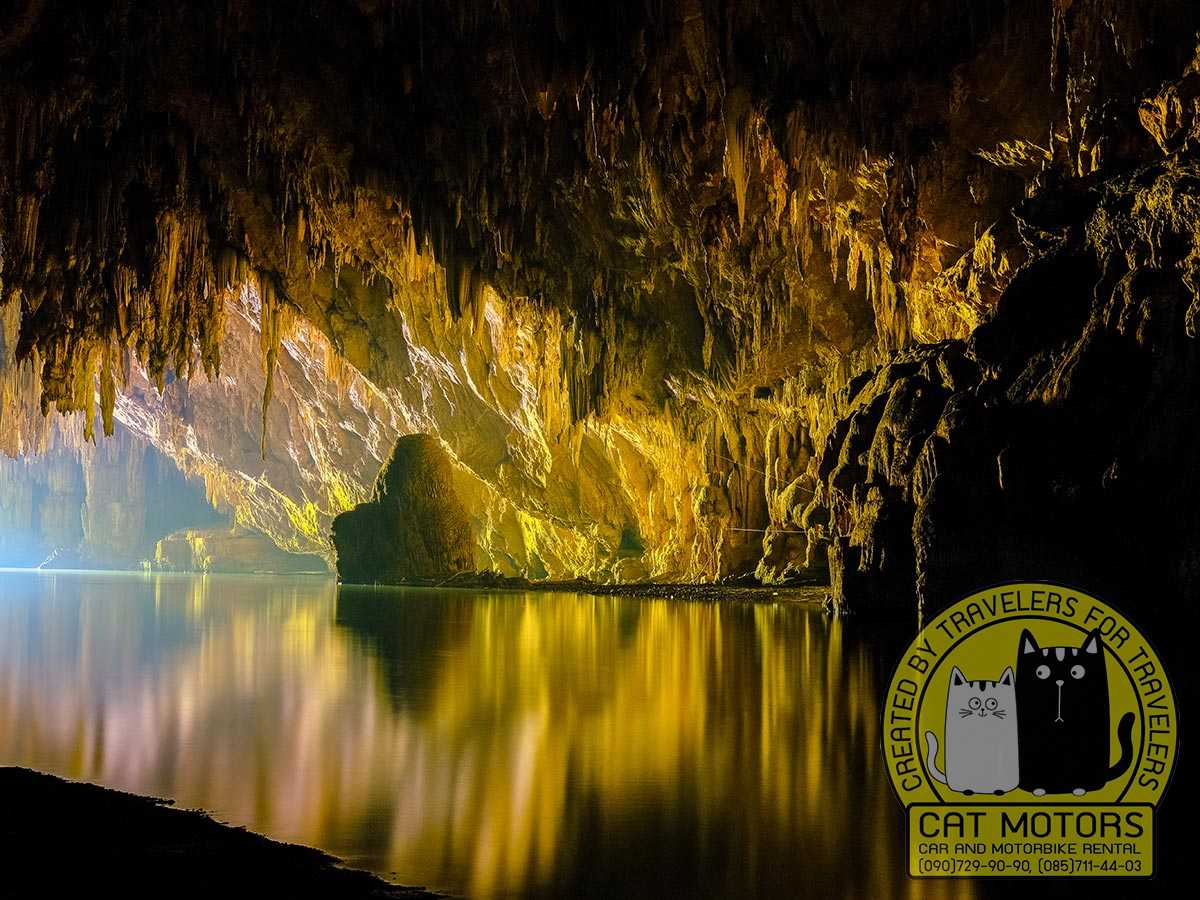
Tham Lod, 49 kilometers from Pai, is one of the most spectacular caves in northern Thailand. It is 1,700 meters long and is divided into three parts. Inside the first two caves, you will find many beautiful limestone and stalactite formations, some over 20 meters high, sure to catch your attention with their bizarre shapes. Guides will accompany you by lighting the way with a gas lantern and tell you about the features of the site.
In the third cave, you can take a bamboo raft, which will be handled by a boatman. If you like to feed the fish, you can buy fish food at the entrance and feed them while floating on the raft.
As in all other caves that exist on our planet, it is pretty cool and very humid. Therefore, be prepared for a lot of sweating. Also, be sure to bring some hats (caps, panama hats, headscarves, etc.) because the site is full of bats that can poop on your head from above. We also recommend that you wear appropriate footwear, as some surfaces can be slippery due to the high humidity, and you have a chance of slipping and hurting yourself.
At the entrance you will find several cafes with traditional Thai cuisine.
Please do not wander without a guide, as walking alone can lead to you getting lost and ending up in a situation that requires emergency assistance. This was the case, for example, with 13 schoolchildren who were trapped inside a cave in Chiang Rai province for several days because of flooding, and all the news channels in the world covered the event until they were rescued.
Pang Ma Pha Viewpoint
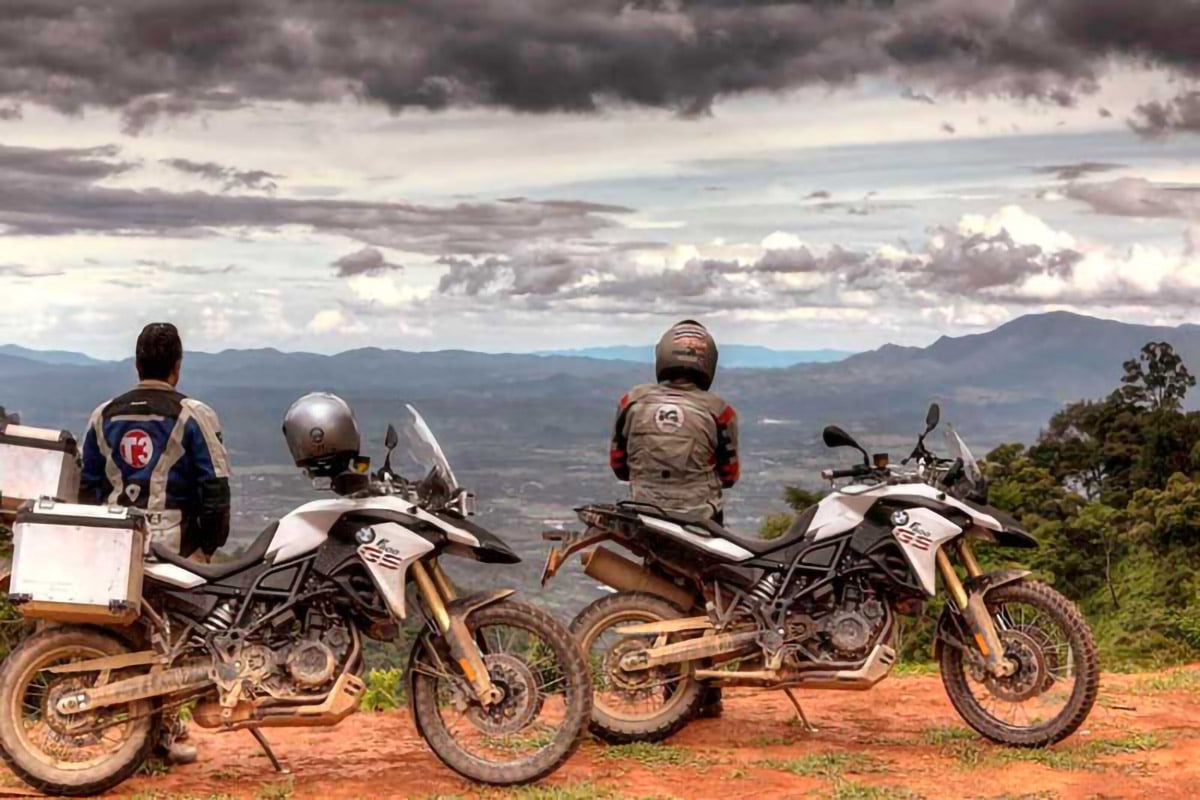
Pang Ma Pha Viewpoint is the highest point of the scenic route from Pai to Mae Hong Son. It is located about 1,300 meters above sea level, offering a panoramic view of the hills of Pang Ma Pha, where many tourists take wonderful photos. The view of the bluish mountains shrouded in white clouds will mesmerize you. There are several kiosks where you can drink coffee while dangling your feet in the sky.
Waterfalls
One of the most stunning natural wonders in Pai are its waterfalls. With so many to choose from, it can be overwhelming to decide which ones to visit. That’s why an detailed travel guide about the waterfalls in Pai can be incredibly helpful for you.
From the majestic Mae Yen waterfall to the hidden gem of Sai Ngam, each waterfall has its own unique charm and appeal. The guide will provide information about the accessibility, entrance fees, and best times to visit each of them. It will also offer tips on how to get the most out of your visit, such as which trails to take and what to bring.
Whether you’re an avid hiker or just looking for a refreshing swim, the waterfalls in Pai are a must-see attraction. With a comprehensive travel guide, visitors can make the most of their time in this beautiful region of Thailand and experience the magic of its natural wonders.
Mae Yen Waterfall
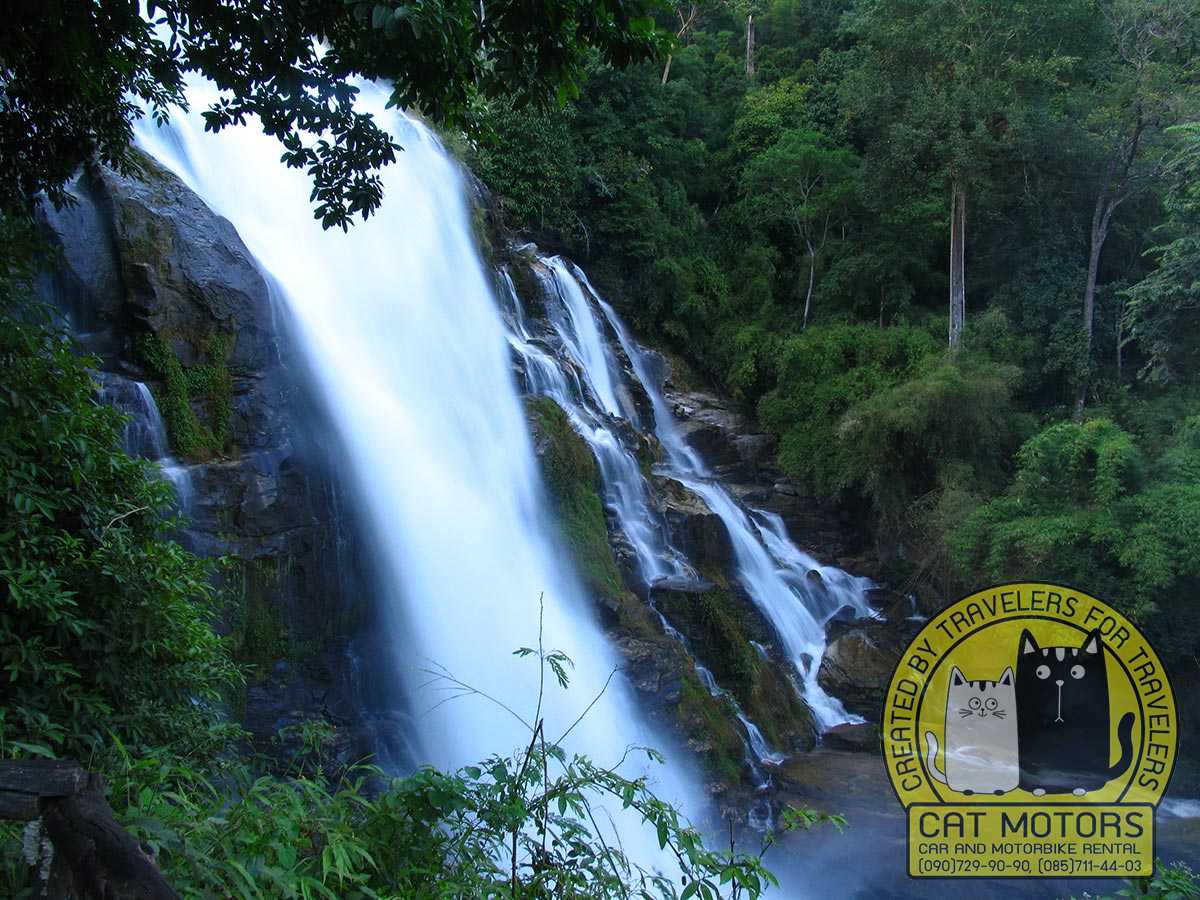
Mae Yen Waterfall is the only waterfall in Pai that you have to hike through the jungle to reach. It is located 7 km from the town and nestled among the beautiful surrounding hills, and takes about 3 hours to hike to the falls one way.
Be careful as a steep section just before the waterfall can be very slippery and dangerous during the rains. The rest of the trail is not easy either, but once you get to your destination, you will be mesmerized by the gorgeous views.
Since you can’t buy food and drinks in the area, you’ll have to bring a water bottle and a snack. The waterfall is in its full glory from November to January, but during the rainy season, the trail can be tricky for curious hikers.
Mor Paeng Waterfall
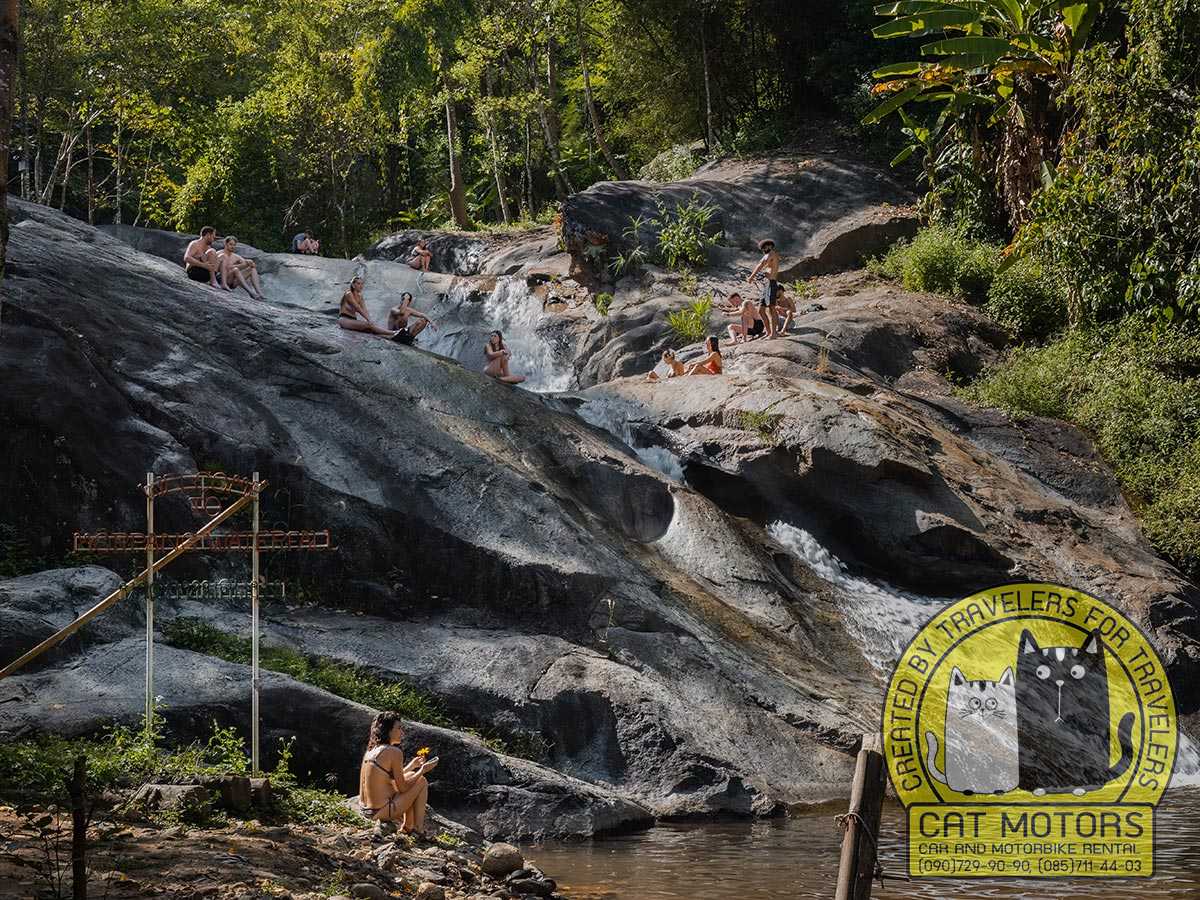
Mo Paeng Waterfall is a beautiful waterfall with a pool, where you can swim and slide down a rock slide! Admission to the waterfall is 100 baht per person but can sometimes be free. The best time to visit this place is early morning when there are few people, and the weather is cool. Two minutes from this place is a local cafe with delicious Thai food, where you can eat and drink if you get hungry.
Pam Bok Waterfall
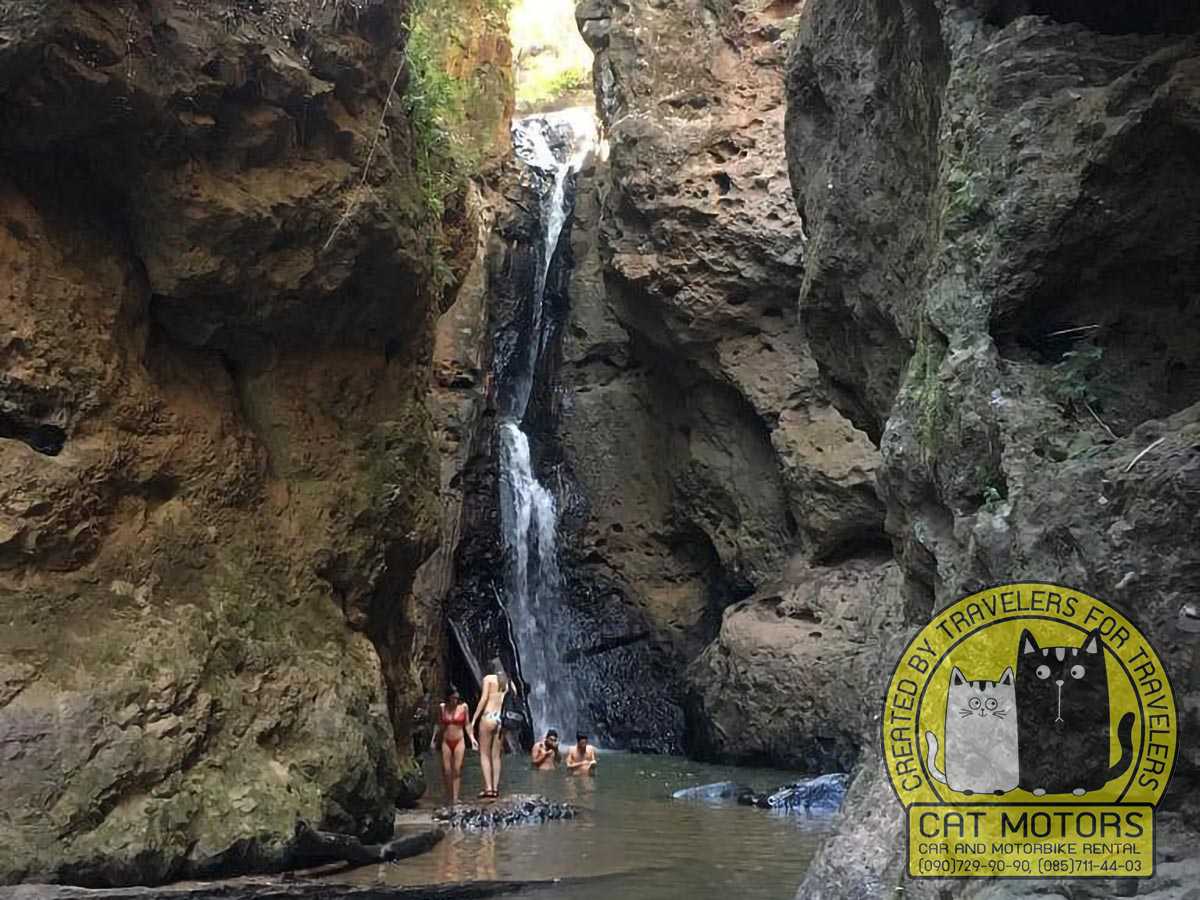
Pam Bok waterfall, located near Pai town, is quite beautiful, with the opportunity to swim in the pool and take great photos for social media, as the surrounding area is colorful with bizarre natural forms. The road to the waterfall and the area around it is shaded by tall trees, so it’s fresh and relaxed even on a hot summer day. Usually, there are almost no people here, especially if you visit this place early in the morning. However, during the day, you will find crowds of foreign tourists, which can cause inconvenience since the waterfall is surrounded by rocks, creating limited free space. Admission costs 40 baht. Visiting this place with sturdy shoes is recommended, especially if you come here after the rain when the paths may be slippery. From November to April, the waterfall can dry out during the dry season.
Tips for Visiting Waterfalls
Visiting waterfalls can be a thrilling experience, but it’s important to take precautions to stay safe and protect the environment. Here are a few tips to keep in mind when visiting the waterfalls in Pai:
- Wear appropriate footwear: The trails to the waterfalls can be slippery and uneven, so it’s important to wear shoes with good traction and support.
- Bring insect repellent: Mosquitoes and other insects can be a nuisance, especially during the wet season. Be sure to bring insect repellent to avoid being bitten.
- Stay on the designated trails: Straying from the marked trails can be dangerous and can also damage the delicate ecosystem surrounding the waterfalls.
- Respect the wildlife: Pai is home to a variety of wildlife, including monkeys and snakes. Keep a safe distance and avoid feeding or approaching them.
- Bring a waterproof bag: To protect your belongings from getting wet, it’s a good idea to bring a waterproof bag or cover for your backpack or camera.
- Check the weather forecast: Heavy rain can cause flash floods and make the trails to the waterfalls dangerous. Check the weather forecast before heading out and avoid visiting during heavy rain or thunderstorms.
By following these tips, visitors can enjoy the natural beauty of the waterfalls in Pai while also minimizing their impact on the environment and staying safe.
Other POIs
Land Split
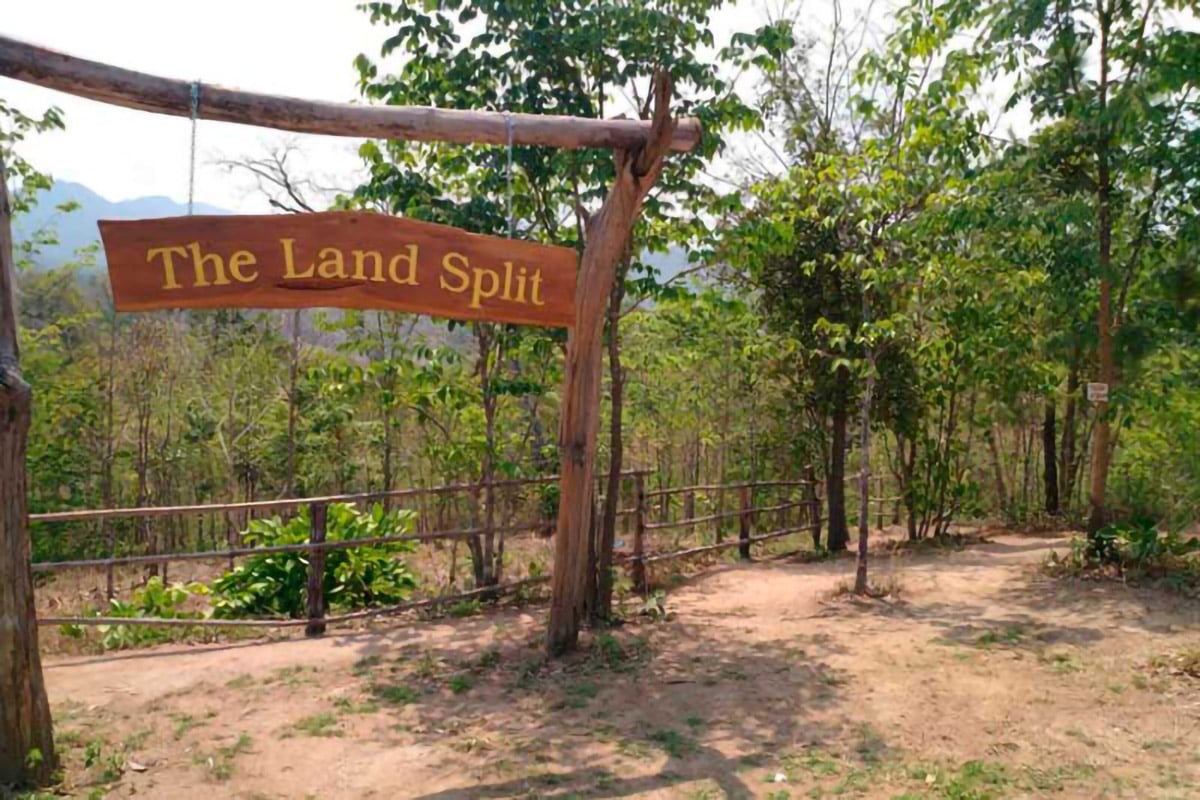
It is a serene and beautiful place with steep and narrow slopes that grow red hibiscus trees. Before this place turned into the Land Split, it was a soybean farm. One day in 2008, seismic activity caused the earth to crack to a depth of 11 meters and a width of 2 meters. The owner of the farm then turned the accident into a tourist attraction.
The owner will warmly welcome you when you visit the Land Split, offering fruit, peanuts, and homemade juice. He asks no money for it, but you can make a donation if you wish. This place is unique not because of the split but because of the amazing hospitality that visitors receive from the owner of this place.
After visiting Pai, you can take a trip to Chiang Rai, or Phu Chi Fa.
Where to Stay in Pai
Pai offers a wide range of accommodations for travelers, from budget-friendly hostels to luxurious resorts. Here are some of the best options for where to stay in Pai:
Budget-Friendly Options
For backpackers or budget-conscious travelers, Pai has several affordable hostels and guesthouses. Common Grounds Pai is a popular choice, offering dormitory-style rooms and private bungalows at reasonable prices. Another option is Deejai Pai Backpackers, which has a lively atmosphere and a communal kitchen for guests to use.
Mid-Range Options
If you’re looking for something a bit more comfortable, Pai has plenty of mid-range accommodations as well. Pai Village Boutique Resort & Farm is a charming hotel with beautiful gardens and a pool, located just a short walk from the town center. Another option is Pura Vida Pai Resort, which offers stylish rooms and a relaxing spa.
Luxury Options
If you’re looking to splurge on your accommodations, Pai has a few luxurious options to choose from. The Pai Island Resort is a stunning property with private villas and beautiful views of the surrounding mountains. Another option is the Reverie Siam Resort, which offers luxurious rooms and a variety of wellness programs and activities.
Overall, no matter what your budget or travel style, Pai has plenty of options for where to stay. From budget-friendly hostels to luxurious resorts, you’re sure to find the perfect accommodations for your trip.
Weather Forecast
Quick Facts About Pai
- Location: Pai is located in Mae Hong Son Province, Northern Thailand.
- Population: Approximately 2,300 residents as of the latest data.
- Climate: Pai experiences a tropical climate with three distinct periods – a cool phase from November to February, a hot phase from March to April, and a rainy phase from May to October.
- Elevation: The town is situated at an elevation of about 550 meters (1,800 feet) above sea level.
- Famous for: Pai is renowned for its picturesque landscapes, including mountains, rice paddies, and waterfalls.
- Accessibility: Accessible primarily by road, the route to Pai from Chiang Mai features 762 curves and is known for its scenic beauty.
- History: Originally a quiet Shan (Tai Yai) village, Pai has a history intertwined with the early Shan and Lanna kingdoms.
- Tourism Growth: Pai has evolved from a sleepy town to a popular tourist destination, especially among backpackers and nature lovers.
- Cultural Mix: The town hosts a blend of local Thai, Shan, and expatriate communities, creating a unique cultural atmosphere.
- Attractions: Key attractions include Pai Canyon, Mo Paeng Waterfall, Tha Pai Hot Spring, and Wat Phra That Mae Yen.
- Accommodation Variety: Pai offers a wide range of accommodations, from hostels and guesthouses to luxury resorts.
- Cuisine: The local food scene is diverse, featuring Thai, Western, and vegetarian options, prominently showcased in the Walking Street night market.
- Art and Music: Pai is known for its vibrant art scene and live music, attracting artists and musicians from around the world.
- Outdoor Activities: Popular activities include trekking, rafting, and visiting nearby hill tribes.
- Night Market: The Pai Walking Street is a popular evening destination for shopping and dining among locals and tourists alike.
- Healthcare: Basic medical services are available in Pai, with more comprehensive facilities in Chiang Mai.
- Transportation within Pai: The town is small enough to explore on foot, but bicycles and scooters are popular for visiting surrounding areas.
- Connectivity: Internet and mobile network coverage are generally good in Pai, especially in the town center and tourist areas. If your phone supports eSIM, we recommend to buy eSIM in advance to avoid loss of time and various inconveniences when buying a SIM card in local shops.
Travel Tips
Embarking on a journey to Pai, nestled in Thailand’s northern hills, demands a bit of savvy to fully embrace what this quaint town offers. Here are some nuanced tips to enhance your travel experience:
- Preparation for the Journey: If traveling by road from Chiang Mai, prepare for the winding route. Motion sickness medication can be a wise addition to your travel kit.
- Choose Your Stay Wisely: Pai’s accommodation landscape varies from cozy hostels to upscale resorts. For a unique experience, consider staying in a traditional bamboo hut or a riverside cottage.
- Embrace the Local Gastronomy: Beyond the well-known Thai dishes, explore Pai’s local specialties. Cafes and restaurants here offer a fusion of international and traditional flavors, with many catering to vegan and vegetarian diets.
- Respect Local Customs: When visiting temples or interacting with locals, it’s crucial to show respect. Simple gestures like removing shoes before entering a temple and dressing modestly can go a long way.
- Explore Beyond the Town: Rent a scooter or bicycle to venture into the surrounding countryside. Places like the Bamboo Bridge and Pai’s hot springs are within easy reach and offer a serene escape from the town center.
- Be Weather-Ready: Pack according to the season. Light clothing for the day and a jacket for cooler evenings are advisable. Don’t forget rain gear if you’re visiting during the monsoon season.
- Plan for Health and Safety: Carry a basic first aid kit. While Pai has a hospital, it’s best to be prepared for minor ailments.
- Photography Etiquette: Pai’s scenic beauty is a photographer’s dream, but always ask for permission before photographing locals or private property.
- Sustainable Tourism Practices: Support the local economy by shopping at local markets and being environmentally conscious. Reducing plastic use and respecting wildlife habitats helps preserve Pai’s natural beauty.
- Adventure Responsibly: If participating in outdoor activities like trekking or rafting, choose ethical operators and respect nature trails and guidelines.
- Stay Connected, Wisely: While Wi-Fi is available in most areas, it’s a good idea to download offline maps and essential information for areas with spotty connectivity.
- Night Market Exploration: Pai’s night market is not just a shopping destination; it’s a cultural experience. It’s a perfect place to sample local delicacies and observe the vibrant local life.
- Language Basics: Learning a few phrases in Thai can enrich your interaction with locals and show your respect for their culture.
- Cash is King: While ATMs are available, many small vendors and rural attractions may only accept cash, so it’s prudent to keep some on hand.
- Take it Slow: Finally, Pai is a place to unwind. Allow yourself to embrace the slow pace and natural rhythm of life here.
As you set off for Pai, remember that the town’s charm lies in its simplicity and natural allure. Approach your journey with an open mind and heart, ready to immerse yourself in the unique experiences that Pai has to offer.
Pros & Cons for Travel to Pai
Visiting Pai in Northern Thailand offers a unique blend of experiences, but it’s important to weigh both the positives and negatives before planning your trip.
Pros
- Stunning Natural Beauty: Pai is encircled by breathtaking landscapes, ideal for nature enthusiasts.
- Tranquil Vibe: The town is a haven for those seeking relaxation away from urban chaos.
- Cultural Melting Pot: A diverse mix of residents and visitors creates a welcoming and eclectic cultural scene.
- Cost-Effective: Expenses in Pai, including food and lodging, are generally lower than in Thailand’s larger cities.
- Diverse Cuisine: From street stalls to cafes, Pai’s culinary scene caters to a variety of tastes.
- Adventure Opportunities: Activities like hiking and river rafting cater to adventure seekers.
- Cultural Sites: Temples and traditional villages offer a glimpse into the local heritage.
- Creative Hub: The town is a hotspot for artists and musicians, boasting a vibrant arts scene.
Cons
- Challenging Access: The journey to Pai, known for its serpentine roads, can be tough for some travelers.
- Seasonal Crowds: Visitor influx during high season might overwhelm Pai’s otherwise serene setting.
- Basic Medical Services: For advanced healthcare needs, travelers must head to bigger cities.
- Weather Constraints: The monsoon period can impede outdoor plans and travel.
- Muted Nightlife: Those seeking a bustling night scene might find Pai’s offerings limited.
- Transport Necessities: Independent transportation like scooters is often needed for exploration.
- Emerging Commercialization: The town’s growing popularity has led to some areas becoming more tourist-centric.
- Inconsistent Connectivity: Internet access, while available, may not always be reliable.
Pai, with its calm ambiance and rich cultural tapestry, is a delight for those seeking a slower-paced journey amidst natural beauty. However, considerations like accessibility and the level of urban comforts available should be part of your planning process.
YT Video Review
Must See Places in Pai Thailand: Is it Still Worth the Road Trip?
Backpacking Pai 🇹🇭 The Gem of Northern Thailand
Exploring Beautiful Northern Thailand
FAQ
The easiest and cheapest way to get to Pai from Chiang Mai is to buy a minibus ticket. Only 150 baht and 3-4 hours on the road, and there you are. You can also rent a motorbike in Chiang Mai from our company if you have a motorcycle driving license.
The town of Pai is located in Northern Thailand in Mae Hong Son Province, 820 kilometers from Bangkok. You can get here either by minibus or airplane, or by your own car or motorcycle.
There is an active airport here in Pai. A private airline, KanAir, flies here from Chiang Mai with a fleet of Cessna Grand Caravan and Beechcraft Premier aircraft. It costs only 2,500 baht and takes only 20 minutes. Unfortunately, we haven’t heard from them lately since the pandemic hit the world.
Pai is a small town in Northern Thailand that is known for its laid-back atmosphere, stunning scenery, and unique culture. It is a popular destination for backpackers, digital nomads, and other travelers looking to experience the beauty of Northern Thailand. Pai is also known for its natural hot springs, waterfalls, and markets.
Absolutely! Pai is a beautiful and unique destination that offers something for everyone. With stunning scenery, hot springs, and a vibrant culture, it is definitely worth visiting.
The best time to visit Pai is during the dry season, which runs from November to April. During this time, the weather is usually sunny and mild, making it the perfect time to explore the area.
Depending on your interests and how much time you have available, you could spend anywhere from a few days to a week or more in Pai. There is plenty to explore and experience, so it’s worth staying for a few days to really get a feel for the place.
Chiang Rai is a great destination for a few days of exploration. Depending on your interests, you could spend anywhere from two to four days in Chiang Rai. This should give you enough time to explore the city, visit the temples, and enjoy the local culture.
After Pai, there are plenty of other destinations to explore in Northern Thailand. Chiang Rai, Chiang Mai, and Mae Hong Son are all popular destinations that are worth visiting. Alternatively, you could also head south to the beach towns of Koh Samui and Phuket.
Yes, there are tuk-tuks in Pai. Tuk-tuks are a popular and convenient way to get around the town. They are relatively cheap and can be hailed from the street or booked in advance.
The road from Chiang Mai to Pai is known for its 762 curves. This winding road passes through stunning countryside, making it a popular route for motorcyclists and drivers looking to take in the scenery.
The Pai Canyon hike is around 4km long and takes around 2-3 hours to complete. The hike passes through stunning scenery and is a great way to explore the area.
Yes, Pai Canyon is free to enter. There is no entrance fee, so you can explore the canyon without having to pay.
The rainy season in Pai usually runs from May to October. During this time, the area experiences heavy rainfall and thunderstorms.
The hot season in Pai usually runs from March to April. During this time, the area experiences hot and humid weather.
The smog season in Pai usually runs from February to April. During this time, the air quality is often poor due to the smoke from burning fields and other sources.
The best time to visit Pai is during the dry season, which runs from November to February. During this time, the weather is usually sunny and mild, making it the perfect time to explore the area.
Dengue fever is present in Pai and is a risk year-round. It is important to take precautions to avoid mosquito bites, such as wearing long-sleeved clothing and using insect repellent.
Embark on an unforgettable journey through Northern Thailand with the help of our detailed travel guides. They showcase the best scenic routes and local highlights. For those ready to begin, our motorbike rental in Chiang Mai home page offers excellent options. It’s also important to review our terms and conditions to be well-prepared. With these resources, you can confidently explore mountain trails and charming villages, making the most of your Northern Thailand adventure.
Our website also provides insights on how to ride safely, what local laws to be aware of, and where to find the best local attractions. These practical tips ensure you have a fun and secure journey, helping you to make the most of your trip.
Cat Motors Team
- Author: Natcha Lindberg
- Updated: 16/09/2025
- No Comments




